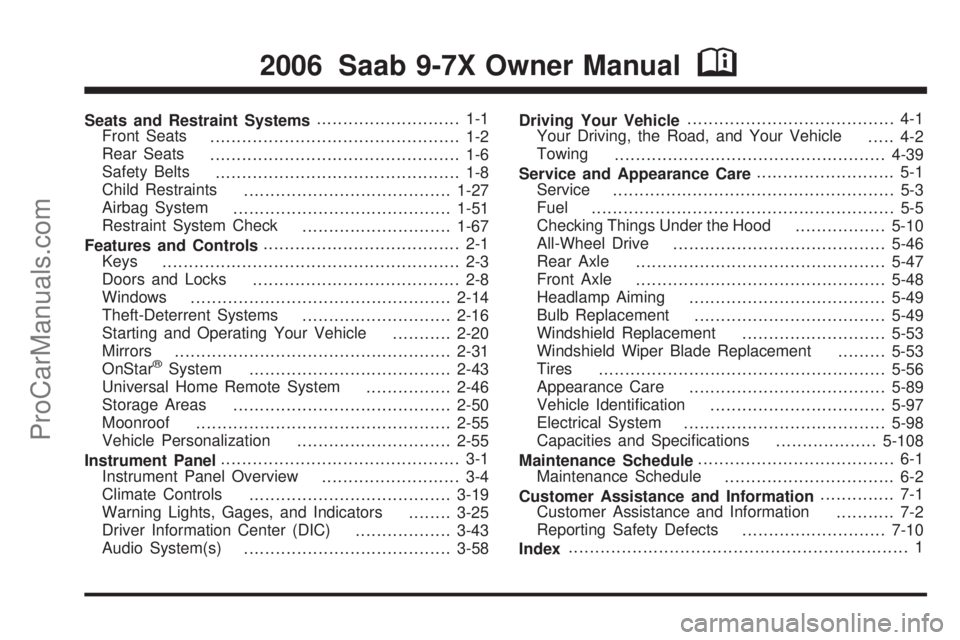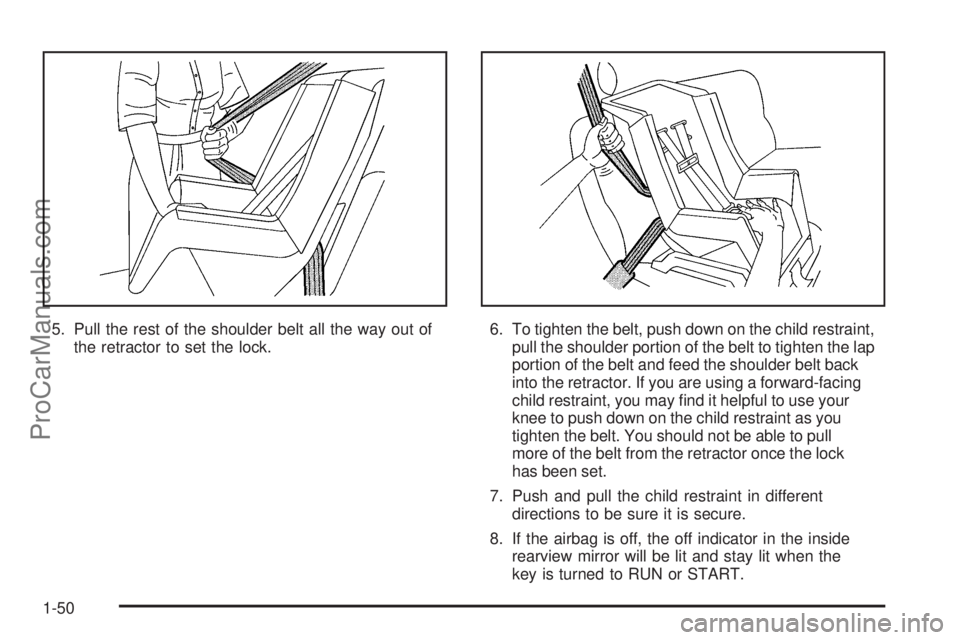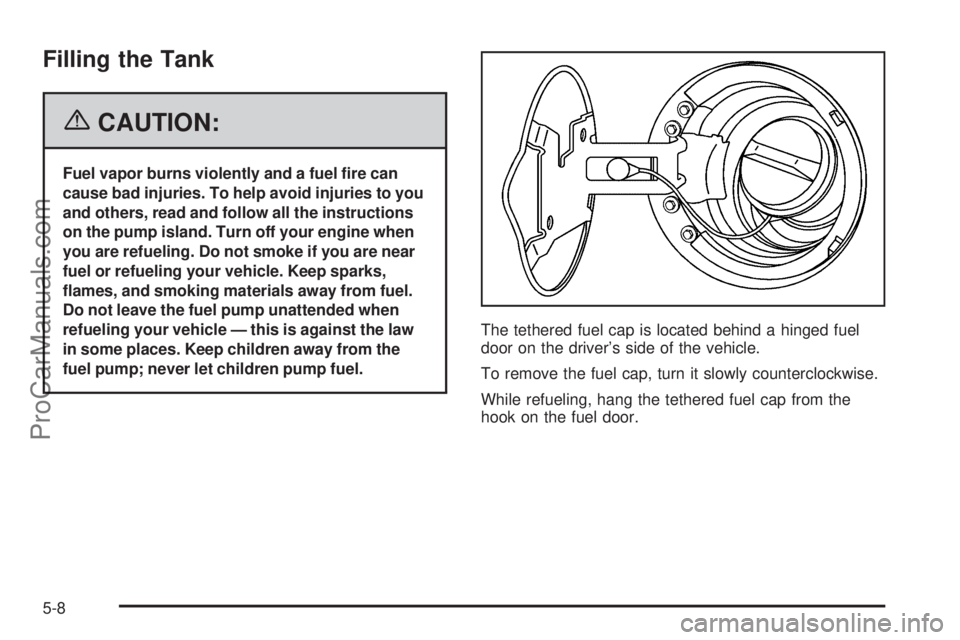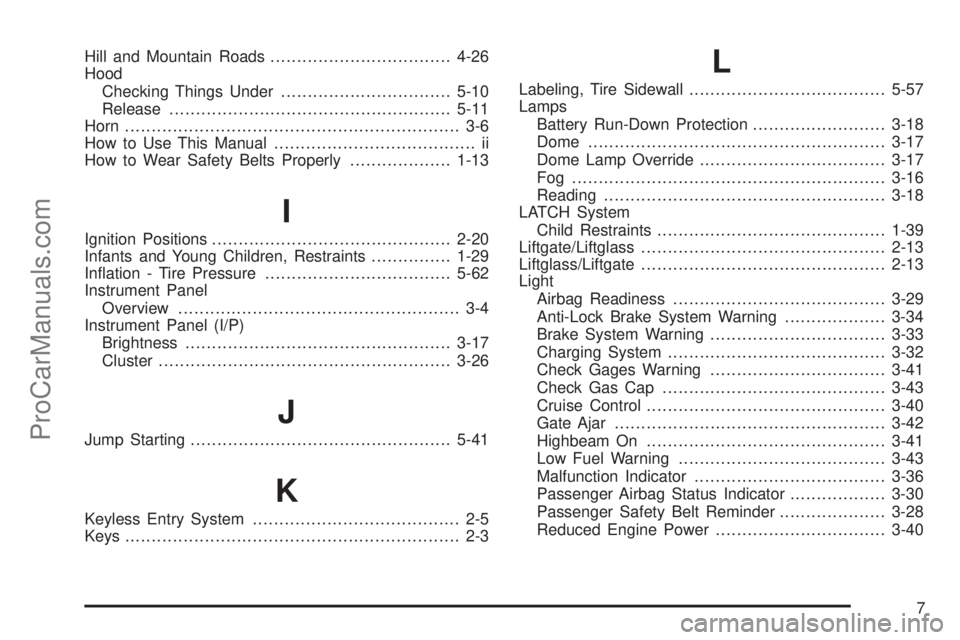child lock SAAB 9-7X 2006 Owners Manual
[x] Cancel search | Manufacturer: SAAB, Model Year: 2006, Model line: 9-7X, Model: SAAB 9-7X 2006Pages: 434, PDF Size: 2.89 MB
Page 1 of 434

Seats and Restraint Systems........................... 1-1
Front Seats
............................................... 1-2
Rear Seats
............................................... 1-6
Safety Belts
.............................................. 1-8
Child Restraints
.......................................1-27
Airbag System
.........................................1-51
Restraint System Check
............................1-67
Features and Controls..................................... 2-1
Keys
........................................................ 2-3
Doors and Locks
....................................... 2-8
Windows
.................................................2-14
Theft-Deterrent Systems
............................2-16
Starting and Operating Your Vehicle
...........2-20
Mirrors
....................................................2-31
OnStar
®System
......................................2-43
Universal Home Remote System
................2-46
Storage Areas
.........................................2-50
Moonroof
................................................2-55
Vehicle Personalization
.............................2-55
Instrument Panel............................................. 3-1
Instrument Panel Overview
.......................... 3-4
Climate Controls
......................................3-19
Warning Lights, Gages, and Indicators
........3-25
Driver Information Center (DIC)
..................3-43
Audio System(s)
.......................................3-58Driving Your Vehicle....................................... 4-1
Your Driving, the Road, and Your Vehicle
..... 4-2
Towing
...................................................4-39
Service and Appearance Care.......................... 5-1
Service
..................................................... 5-3
Fuel
......................................................... 5-5
Checking Things Under the Hood
.................5-10
All-Wheel Drive
........................................5-46
Rear Axle
...............................................5-47
Front Axle
...............................................5-48
Headlamp Aiming
.....................................5-49
Bulb Replacement
....................................5-49
Windshield Replacement
...........................5-53
Windshield Wiper Blade Replacement
.........5-53
Tires
......................................................5-56
Appearance Care
.....................................5-89
Vehicle Identi�cation
.................................5-97
Electrical System
......................................5-98
Capacities and Speci�cations
...................5-108
Maintenance Schedule..................................... 6-1
Maintenance Schedule
................................ 6-2
Customer Assistance and Information.............. 7-1
Customer Assistance and Information
........... 7-2
Reporting Safety Defects
...........................7-10
Index................................................................ 1
2006 Saab 9-7X Owner ManualM
ProCarManuals.com
Page 27 of 434

Right Front Passenger Position
To learn how to wear the right front passenger’s safety
belt properly, seeDriver Position on page 1-14.
The right front passenger’s safety belt works the same
way as the driver’s safety belt — except for one thing.
If you ever pull the shoulder portion of the belt out all the
way, you will engage the child restraint locking feature.
If this happens, just let the belt go back all the way and
start again.
Rear Seat Passengers
It is very important for rear seat passengers to buckle up!
Accident statistics show that unbelted people in the rear
seat are hurt more often in crashes than those who are
wearing safety belts.
Rear passengers who are not safety belted can be
thrown out of the vehicle in a crash. And they can
strike others in the vehicle who are wearing safety belts.
1-21
ProCarManuals.com
Page 47 of 434

Lower Anchor and Top Tether Anchor
Locations
i(Top Tether Anchor):
Seating positions with top
tether anchors.
j(Lower Anchor):
Seating positions with
two lower anchors.
To assist you in locating
the lower anchors, each
seating position with lower
anchors has two labels,
near the crease between
the seatback and the seat
cushion, showing where
the anchors are located.The labels are located above a �ap, at the base of the
seatback, in the rear outside seating positions. The
anchors are located under the �ap. In order to get to the
anchors you will need to pull the strap at the center of
the seat where the seat cushion meets the seatback.
This will allow you to fold the seat cushion up and out of
the way. Lift the �ap to expose the anchors and then
lower the seat cushion. Be sure the cushion is
locked into place.
The top tether anchors for each rear seating position
are located on the �oor in the cargo area of your vehicle.
Do not use the rear tie-down brackets near the liftgate
for top tethers. Be sure to use an anchor located on the
same side of the vehicle as the seating position where
the child restraint will be placed.
Second Row
1-41
ProCarManuals.com
Page 49 of 434

{CAUTION:
Each top tether anchor and lower anchor in the
vehicle is designed to hold only one child
restraint. Attaching more than one child
restraint to a single anchor could cause the
anchor or attachment to come loose or even
break during a crash. A child or others could be
injured if this happens. To help prevent injury to
people and damage to your vehicle, attach only
one child restraint per anchor.
1. Attach and tighten the lower attachments to the lower
anchors. If the child restraint does not have lower
attachments or the desired seating position does
not have lower anchors, secure the child restraint
with the top tether and the safety belts. Refer to your
child restraint manufacturer instructions and the
instructions in this manual.
1.1. Find the lower anchors for the desired
seating position.1.2. Pull the strap at the center of the seat where
the seat cushion meets the seatback. This will
allow you to fold the seat cushion up and out
of the way. Lift the �ap to expose the anchors
and then lower the seat cushion. SeeRear
Seat Operation on page 1-6for additional
information. Be sure the cushion is locked
into place.
1.3. Put the child restraint on the seat.
1.4. Attach and tighten the lower attachments on
the child restraint to the lower anchors.
2. If the child restraint manufacturer recommends that
the top tether be attached, attach and tighten the top
tether to the top tether anchor, if equipped. Refer
to the child restraint instructions and the following
steps:
2.1. Find the top tether anchor.
2.2. Route and tighten the top tether according
to your child restraint instructions and the
following instructions. If your vehicle is
equipped with a cargo shade, route the top
tether between the seatback and the cargo
shade.
1-43
ProCarManuals.com
Page 56 of 434

5. Pull the rest of the shoulder belt all the way out of
the retractor to set the lock.6. To tighten the belt, push down on the child restraint,
pull the shoulder portion of the belt to tighten the lap
portion of the belt and feed the shoulder belt back
into the retractor. If you are using a forward-facing
child restraint, you may �nd it helpful to use your
knee to push down on the child restraint as you
tighten the belt. You should not be able to pull
more of the belt from the retractor once the lock
has been set.
7. Push and pull the child restraint in different
directions to be sure it is secure.
8. If the airbag is off, the off indicator in the inside
rearview mirror will be lit and stay lit when the
key is turned to RUN or START.
1-50
ProCarManuals.com
Page 82 of 434

Doors and Locks
Door Locks
{CAUTION:
Unlocked doors can be dangerous.
Passengers — especially children — can
easily open the doors and fall out of a
moving vehicle. When a door is locked, the
handle will not open it. You increase the
chance of being thrown out of the vehicle in
a crash if the doors are not locked. So, wear
safety belts properly and lock the doors
whenever you drive.
Young children who get into unlocked
vehicles may be unable to get out. A child
can be overcome by extreme heat and can
suffer permanent injuries or even death
from heat stroke. Always lock your vehicle
whenever you leave it.
Outsiders can easily enter through an
unlocked door when you slow down or stop
your vehicle. Locking your doors can help
prevent this from happening.There are several ways to lock and unlock your vehicle.
From the outside, use the remote keyless entry
transmitter or the key.
From the inside, slide
the manual lever forward
or rearward.
The manual lever on each door works only that
door’s lock.
2-8
ProCarManuals.com
Page 245 of 434

Steering in Emergencies
There are times when steering can be more effective than
braking. For example, you come over a hill and �nd a
truck stopped in your lane, or a car suddenly pulls out
from nowhere, or a child darts out from between parked
cars and stops right in front of you. You can avoid these
problems by braking — if you can stop in time. But
sometimes you cannot; there is not room. That is the
time for evasive action — steering around the problem.
Your vehicle can perform very well in emergencies like
these. First apply your brakes.
SeeBraking on page 4-6. It is better to remove as much
speed as you can from a possible collision. Then steer
around the problem, to the left or right depending on the
space available.An emergency like this requires close attention and a
quick decision. If you are holding the steering wheel at
the recommended 9 and 3 o’clock positions, you can turn
it a full 180 degrees very quickly without removing either
hand. But you have to act fast, steer quickly, and just as
quickly straighten the wheel once you have avoided the
object.
The fact that such emergency situations are always
possible is a good reason to practice defensive driving
at all times and wear safety belts properly.
4-15
ProCarManuals.com
Page 290 of 434

Filling the Tank
{CAUTION:
Fuel vapor burns violently and a fuel �re can
cause bad injuries. To help avoid injuries to you
and others, read and follow all the instructions
on the pump island. Turn off your engine when
you are refueling. Do not smoke if you are near
fuel or refueling your vehicle. Keep sparks,
�ames, and smoking materials away from fuel.
Do not leave the fuel pump unattended when
refueling your vehicle — this is against the law
in some places. Keep children away from the
fuel pump; never let children pump fuel.The tethered fuel cap is located behind a hinged fuel
door on the driver’s side of the vehicle.
To remove the fuel cap, turn it slowly counterclockwise.
While refueling, hang the tethered fuel cap from the
hook on the fuel door.
5-8
ProCarManuals.com
Page 427 of 434

Hill and Mountain Roads..................................4-26
Hood
Checking Things Under................................5-10
Release.....................................................5-11
Horn............................................................... 3-6
How to Use This Manual...................................... ii
How to Wear Safety Belts Properly...................1-13
I
Ignition Positions.............................................2-20
Infants and Young Children, Restraints...............1-29
In�ation - Tire Pressure...................................5-62
Instrument Panel
Overview..................................................... 3-4
Instrument Panel (I/P)
Brightness..................................................3-17
Cluster.......................................................3-26
J
Jump Starting.................................................5-41
K
Keyless Entry System....................................... 2-5
Keys............................................................... 2-3
L
Labeling, Tire Sidewall.....................................5-57
Lamps
Battery Run-Down Protection.........................3-18
Dome........................................................3-17
Dome Lamp Override...................................3-17
Fog ...........................................................3-16
Reading.....................................................3-18
LATCH System
Child Restraints...........................................1-39
Liftgate/Liftglass..............................................2-13
Liftglass/Liftgate..............................................2-13
Light
Airbag Readiness........................................3-29
Anti-Lock Brake System Warning...................3-34
Brake System Warning.................................3-33
Charging System.........................................3-32
Check Gages Warning.................................3-41
Check Gas Cap..........................................3-43
Cruise Control.............................................3-40
Gate Ajar...................................................3-42
Highbeam On.............................................3-41
Low Fuel Warning.......................................3-43
Malfunction Indicator....................................3-36
Passenger Airbag Status Indicator..................3-30
Passenger Safety Belt Reminder....................3-28
Reduced Engine Power................................3-40
7
ProCarManuals.com